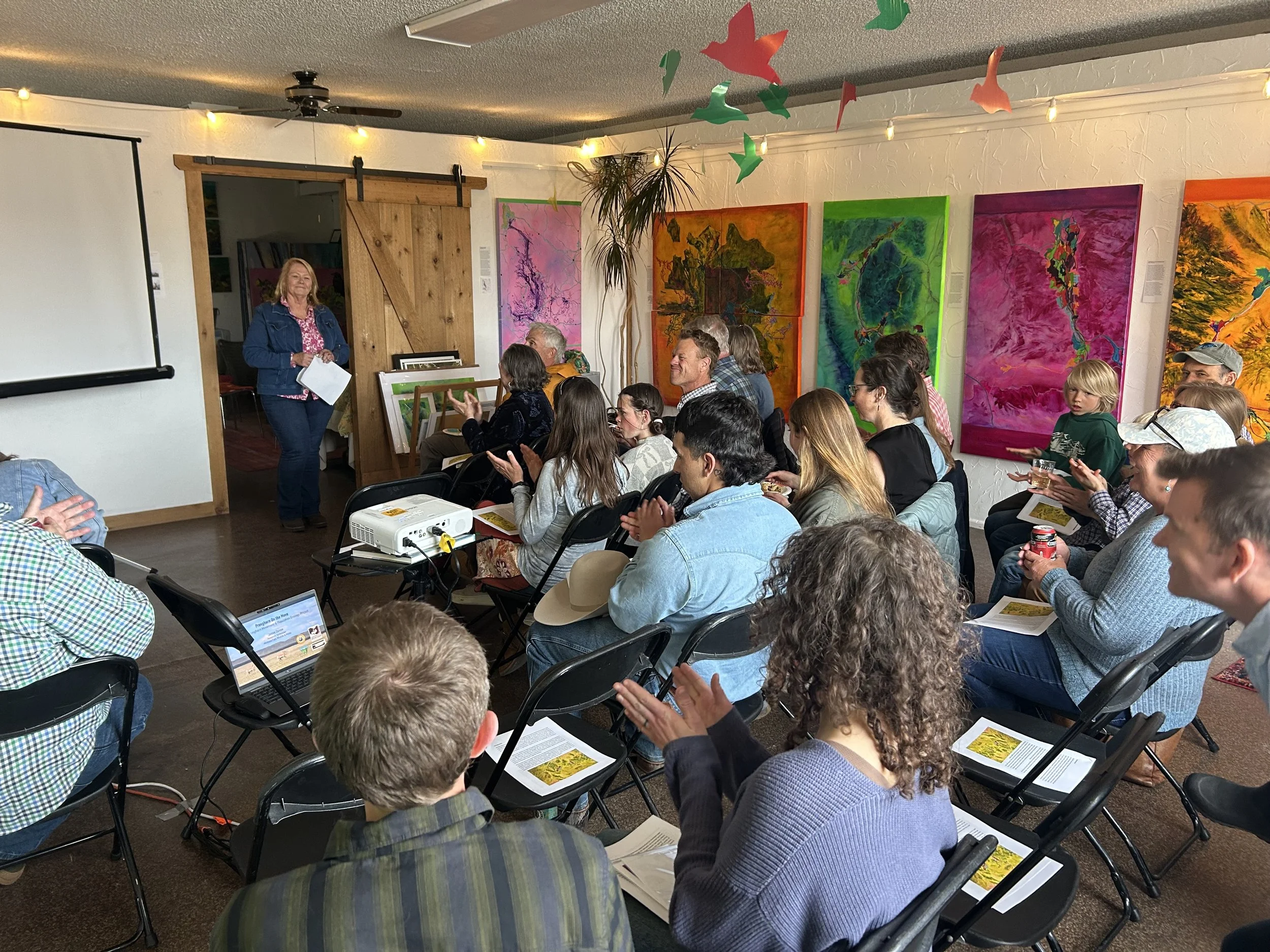Collaboration and Connectivity!
On April 25th, I held a migration art and science event in my studio. Organized by Collin Peterson (National Wildlife Federation, Dillon, MT), Pat Todd (National Parks Conservation Association), and Simon Buzzard (National Wildlife Federation, Missoula, MT), the event featured speakers from the conservation and science community. Simon Buzzard (NWF) gave an overview of challenges that migrating pronghorn face, Jesse DeVoe (Montana Fish, Wildlife, and Parks) presented pronghorn science and statistics, Collin Peterson spoke of local fence modification projects and their impact, and Simon Bergen from Idaho Fish and Game highlighted research and fence modification efforts in his state. The accompanying text for the event was supported by NPCA, and additional text was provided by Sara Domek (The Nature Conservancy, Wyoming).
Pat Todd wrote the press release below and provided photos.
Thanks to ALL who attended and participated!
Community Gathers to Celebrate Art and Science of Wildlife Migration
by Pat Todd
National Parks Conservation Association
Nearly 30 community members gathered Friday night at Linda Foy Atelier — a gallery and the studio workspace of Linda Foy in Twin Bridges, MT — to celebrate the art and science of restoring wildlife connectivity in Beaverhead and Madison Counties.
Researcher Jesse DeVoe from Montana Fish, Wildlife and Parks (FWP), and Collin Peterson, project coordinator at National Wildlife Federation (NWF) spoke about win-win solutions for wildlife and ranchers that are benefiting the land, wildlife, and rural communities.
DeVoe shared insights from FWP’s Montana Pronghorn Population and Ecology Project, which tracked pronghorn movements, seasonal habitat use, and demographics across seven study areas, including the Big Hole Valley and Madison Valley. He emphasized how the study revealed migration patterns that were previously unknown. “Some of these animals are moving up to 100 miles in a single year to reach their seasonal habitat in the Madison Valley,” DeVoe explained.
Linda Foy shared how her work became intertwined with the story of migration. Originally drawn to the beauty of maps of the Greater Yellowstone Ecosystem — depicting its geology, hydrology, and animal movement — Foy began creating art that tells a deeper story of science and nature.
Greeting each attendee to her gallery personally, Foy remarked, “Every single person has asked for more information about pronghorn migration.” One of her paintings, which portrays the more than 20,000 miles of fencing in Beaverhead County, sparks particularly important conversations. “This painting has changed every single person’s view on fencing and created conversation around migration,” she shared.
Peterson explained how wildlife-friendly fence designs allow livestock containment while dramatically improving safe wildlife passage and reducing fence damage from crossing attempts. “If you are a landowner in the rural communities of the West, you can prevent this conflict. You can find something that works nine times out of ten,” Peterson said.
The National Wildlife Federation, along with non-profit partners like the National Parks Conservation Association (NPCA) and state and federal agencies, support landowners in replacing traditional livestock fences with wildlife-friendly designs. These fences often feature raised and barbless bottom wires, making it easier for pronghorn to pass underneath -- their preferred method of crossing.
“With increasing frequency and severity of catastrophic environmental events, the need for animals to move freely is greater than ever, but with landscape fragmentation, the ability for them to move is decreasing... After installing wildlife-friendly fences, we immediately see improvements in wildlife passage across fences”, said Peterson.
The evening concluded with an engaging discussion between the audience and experts from state agencies in both Montana and Idaho.
For more information about wildlife-friendly fencing or to volunteer, please contact Collin Peterson (National Wildlife Federation, Southwest Montana) or Pat Todd (National Parks Conservation Association, Madison Valley, Paradise Valley, Hebgen Basin). Linda Foy willbe the artist-in-residence at the Draper Natural History Museum at The Buffalo Bill Center of the West in Cody, Wyoming, from June 16th-20th.









